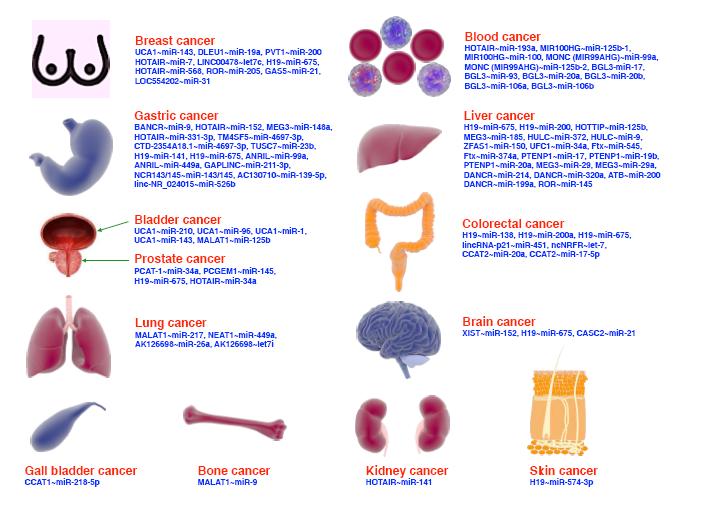| 1. |
Zhou M, Wang H, Zeng X, et al. Mortality, morbidity, and risk factors in China and its provinces, 1990–2017: a systematic analysis for the Global Burden of Disease Study 2017. Lancet, 2019, 394(10204): 1145-1158.
|
| 2. |
Bray F, Laversanne M, Sung H, et al. Global cancer statistics 2022: GLOBOCAN estimates of incidence and mortality worldwide for 36 cancers in 185 countries. CA Cancer J Clin, 2024, 74(3): 229-263.
|
| 3. |
郝运, 李川, 文天夫, 等. 全球及中国的肝癌流行病学特征: 基于《2022全球癌症统计报告》解读. 中国普外基础与临床杂志, 2024, 31(7): 781-789.
|
| 4. |
姚一菲, 孙可欣, 郑荣寿. 《2022全球癌症统计报告》解读: 中国与全球对比. 中国普外基础与临床杂志, 2024, 31(7): 769-780.
|
| 5. |
Pinna AD, Yang T, Mazzaferro V, et al. Liver transplantation and hepatic resection can achieve cure for hepatocellular carcinoma. Ann Surg, 2018, 268(5): 868-875.
|
| 6. |
Tabrizian P, Jibara G, Shrager B, et al. Recurrence of hepatocellular cancer after resection: patterns, treatments, and prognosis. Ann Surg, 2015, 261(5): 947-955.
|
| 7. |
Jiang Y, Xu D, Song H, et al. Inflammation and nutrition-based biomarkers in the prognosis of oesophageal cancer: a systematic review and meta-analysis. BMJ Open, 2021, 11(9): e048324. doi: 10.1136/bmjopen-2020-048324.
|
| 8. |
Tawfik B, Mokdad AA, Patel PM, et al. The neutrophil to albumin ratio as a predictor of pathological complete response in rectal cancer patients following neoadjuvant chemoradiation. Anticancer Drugs, 2016, 27(9): 879-883.
|
| 9. |
Li R, Sun Z, Song S, et al. NARFIB: A novel prognostic score based on the neutrophil-to-albumin ratio and fibrinogen can predict the prognosis of gastrointestinal stromal tumors. Cancer Manag Res, 2020, 12: 11183-11190.
|
| 10. |
Ferro M, Babă DF, de Cobelli O, et al. Neutrophil percentage-to-albumin ratio predicts mortality in bladder cancer patients treated with neoadjuvant chemotherapy followed by radical cystectomy. Future Sci OA, 2021, 7(7): FSO709. doi: 10.2144/fsoa-2021-0008.
|
| 11. |
Feng C, Yu H, Lei H, et al. A prognostic model using the neutrophil-albumin ratio and PG-SGA to predict overall survival in advanced palliative lung cancer. BMC Palliat Care, 2022, 21(1): 81. doi: 10.1186/s12904-022-00972-x.
|
| 12. |
Tingle SJ, Severs GR, Goodfellow M, et al. NARCA: A novel prognostic scoring system using neutrophil-albumin ratio and CA19-9 to predict overall survival in palliative pancreatic cancer. J Surg Oncol, 2018, 118(4): 680-686.
|
| 13. |
Chan AWH, Zhong J, Berhane S, et al. Development of pre and post-operative models to predict early recurrence of hepatocellular carcinoma after surgical resection. J Hepatol, 2018, 69(6): 1284-1293.
|
| 14. |
Wu JC, Huang YH, Chau GY, et al. Risk factors for early and late recurrence in hepatitis B-related hepatocellular carcinoma. J Hepatol, 2009, 51(5): 890-897.
|
| 15. |
Imamura H, Matsuyama Y, Tanaka E, et al. Risk factors contributing to early and late phase intrahepatic recurrence of hepatocellular carcinoma after hepatectomy. J Hepatol, 2003, 38(2): 200-207.
|
| 16. |
He LY, Xia ZJ, Zhang XY, et al. Tenofovir versus entecavir on the prognosis of hepatitis B-related hepatocellular carcinoma after surgical resection: a randomised controlled trial. Int J Surg, 2023, 109(10): 3032-3041.
|
| 17. |
中华人民共和国国家卫生健康委员会. 原发性肝癌诊疗指南(2024年版). 肿瘤综合治疗电子杂志, 2024, 10(3): 17-68.
|
| 18. |
Shen J, He L, Li C, et al. Prognostic nomograms for patients with resectable hepatocelluar carcinoma incorporating systemic inflammation and tumor characteristics. Oncotarget, 2016, 7(49): 80783-80793.
|
| 19. |
Hu X, Xiang F, Feng Y, et al. Neutrophils promote tumor progression in oral squamous cell carcinoma by regulating EMT and JAK2/STAT3 signaling through chemerin. Front Oncol, 2022, 12: 812044. doi: 10.3389/fonc.2022.812044.
|
| 20. |
Mano Y, Shirabe K, Yamashita Y, et al. Preoperative neutrophil-to-lymphocyte ratio is a predictor of survival after hepatectomy for hepatocellular carcinoma: a retrospective analysis. Ann Surg, 2013, 258(2): 301-305.
|
| 21. |
Motomura T, Shirabe K, Mano Y, et al. Neutrophil-lymphocyte ratio reflects hepatocellular carcinoma recurrence after liver transplantation via inflammatory microenvironment. J Hepatol, 2013, 58(1): 58-64.
|
| 22. |
Itoh S, Yugawa K, Shimokawa M, et al. Prognostic significance of inflammatory biomarkers in hepatocellular carcinoma following hepatic resection. BJS Open, 2019, 3(4): 500-508.
|
| 23. |
Mantovani A, Allavena P, Sica A, et al. Cancer-related inflammation. Nature, 2008, 454(7203): 436-444.
|
| 24. |
Diakos CI, Charles KA, McMillan DC, et al. Cancer-related inflammation and treatment effectiveness. Lancet Oncol, 2014, 15(11): e493-e503. doi: 10.1016/S1470-2045(14)70263-3.
|
| 25. |
Taniguchi K, Karin M. NF-κB, inflammation, immunity and cancer: coming of age. Nat Rev Immunol, 2018, 18(5): 309-324.
|
| 26. |
Singel KL, Segal BH. Neutrophils in the tumor microenvironment: trying to heal the wound that cannot heal. Immunol Rev, 2016, 273(1): 329-343.
|
| 27. |
Nojiri S, Joh T. Albumin suppresses human hepatocellular carcinoma proliferation and the cell cycle. Int J Mol Sci, 2014, 15(3): 5163-5174.
|
| 28. |
Bağırsakçı E, Şahin E, Atabey N, et al. Role of albumin in growth inhibition in hepatocellular carcinoma. Oncology, 2017, 93(2): 136-142.
|
| 29. |
Carr BI, Guerra V. Serum albumin levels in relation to tumor parameters in hepatocellular carcinoma patients. Int J Biol Markers, 2017, 32(4): e391-e396. doi: 10.5301/ijbm.5000300.
|
| 30. |
Bao X, Liu F, Lin J, et al. Nutritional assessment and prognosis of oral cancer patients: a large-scale prospective study. BMC Cancer, 2020, 20(1): 146. doi: 10.1186/s12885-020-6604-2.
|
| 31. |
Dupont PJ, Warrens AN. Fas ligand exerts its pro-inflammatory effects via neutrophil recruitment but not activation. Immunology, 2007, 120(1): 133-139.
|
| 32. |
CSCO肿瘤营养治疗专家委员会. 恶性肿瘤患者的营养治疗专家共识. 临床肿瘤学杂志, 2012, 17(1): 59-73.
|
| 33. |
Hou J, Karin M, Sun B. Targeting cancer-promoting inflammation—Have anti-inflammatory therapies come of age?. Nat Rev Clin Oncol, 2021, 18(5): 261-279.
|
| 34. |
Behrens LM, van Egmond M, van den Berg TK. Neutrophils as immune effector cells in antibody therapy in cancer. Immunol Rev, 2023, 314(1): 280-301.
|




